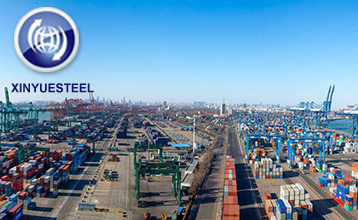The key to China's struggle for the right to speak in the nickel market is to make good use of financial market tools
Jun. 18, 2020
According to statistics, China imported 188,000 tons of pure nickel and exported 36,600 tons of pure nickel in 2019. The net import of pure nickel for the whole year was 151,400 tons. It is understood that the vast majority of China's pure nickel exports are regional logistics goods under special customs supervision, totaling 34,000 tons. They are mainly used for delivery of the London Metal Exchange (LME) Asian warehouse, and are used for incoming processing and incoming processing. The total volume of general trade is less than 2400 tons.
From the perspective of the end consumer market of nickel, the steel industry occupies an absolute share of nickel consumption. The development and demand of the steel industry, especially the stainless steel industry will directly determine the trend of nickel prices. From the perspective of stainless steel consumption, China's apparent stainless steel consumption in 2018 was 22.095 million tons, a year-on-year increase of 121.46 million tons, an increase of 5.82%. The strong demand for stainless steel stimulates production, thereby driving the industry's strong demand for nickel, stimulating nickel prices to go out of the upward trend with steel prices, and making nickel the most dazzling variety of nonferrous base metals after 2018. In this sense, the application pattern of nickel determines the nickel price is closely related to the steel industry. The price of stainless steel and market changes directly determine the fluctuation of nickel price to a certain extent.

After the listing of stainless steel futures, the impact of the futures market on the stainless steel market price will become an important factor in determining the market price based on the fundamentals of supply and demand. Nickel accounts for a relatively high proportion of stainless steel production costs, which will result in price differences between different markets and different varieties, which brings opportunities for financial arbitrage. At the same time, Lun Nickel and Shanghai Nickel respectively represent the demand for nickel in the global market and the Chinese market. The inventory difference between the two and the unsynchronized market expectations will also bring opportunities for market operations. If the three are combined, the opportunities for speculative arbitrage will increase.
Judging from the nickel price trends of the Shanghai Futures Exchange and the London Metal Exchange in two markets since 2019, the Shanghai Futures Exchange's price trend is stronger than the London Metal Exchange in more than half of the trading time, which fully shows that China's Driven by the strong demand for nickel resources, capital is keen on Chinese nickel futures trading. At the same time, the Chinese futures market started late, and the market is less complete than foreign mature exchanges, and there is a greater probability of financial speculation. The introduction of stainless steel futures may stimulate speculation in financial capital with a high probability, which in turn will affect nickel prices.
Therefore, how to make good use of financial market tools is the key for China to compete for the right to speak in the nickel metal market in the future.



